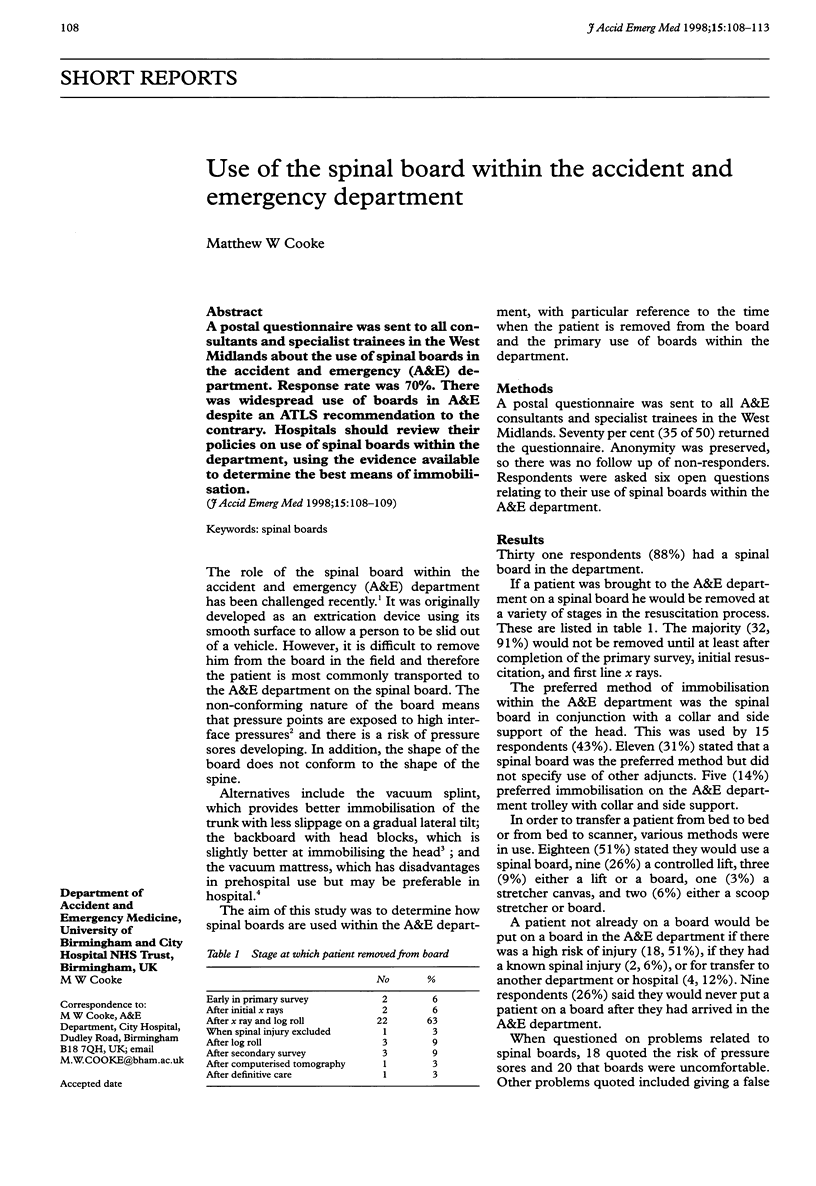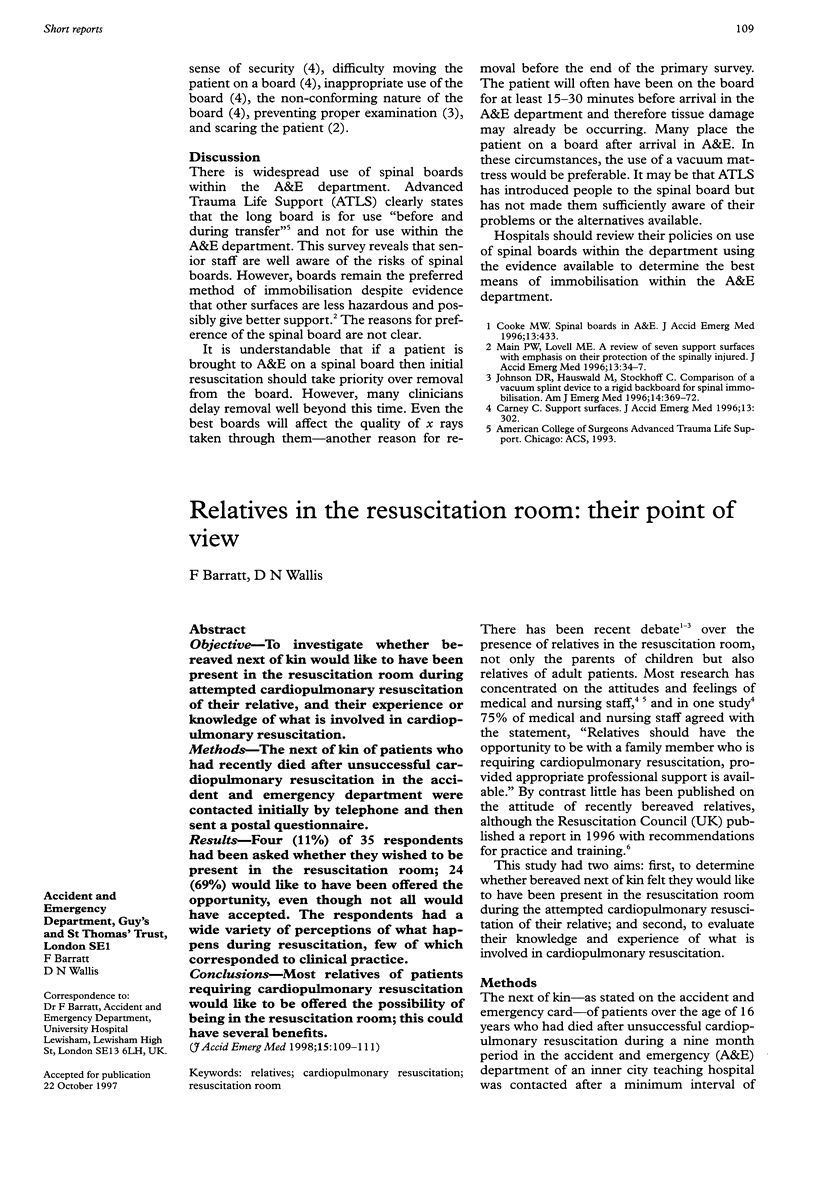Abstract
A postal questionnaire was sent to all consultants and specialist trainees in the West Midlands about the use of spinal boards in the accident and emergency (A&E) department. Response rate was 70%. There was widespread use of boards in A&E despite an ATLS recommendation to the contrary. Hospitals should review their policies on use of spinal boards within the department, using the evidence available to determine the best means of immobilisation.
Full text
PDF

Selected References
These references are in PubMed. This may not be the complete list of references from this article.
- Carney C. J. Support surfaces. J Accid Emerg Med. 1996 Jul;13(4):302–302. doi: 10.1136/emj.13.4.302-b. [DOI] [PMC free article] [PubMed] [Google Scholar]
- Cooke M. Spinal boards. J Accid Emerg Med. 1996 Nov;13(6):433–433. doi: 10.1136/emj.13.6.433-b. [DOI] [PMC free article] [PubMed] [Google Scholar]
- Johnson D. R., Hauswald M., Stockhoff C. Comparison of a vacuum splint device to a rigid backboard for spinal immobilization. Am J Emerg Med. 1996 Jul;14(4):369–372. doi: 10.1016/S0735-6757(96)90051-0. [DOI] [PubMed] [Google Scholar]
- Main P. W., Lovell M. E. A review of seven support surfaces with emphasis on their protection of the spinally injured. J Accid Emerg Med. 1996 Jan;13(1):34–37. doi: 10.1136/emj.13.1.34. [DOI] [PMC free article] [PubMed] [Google Scholar]


